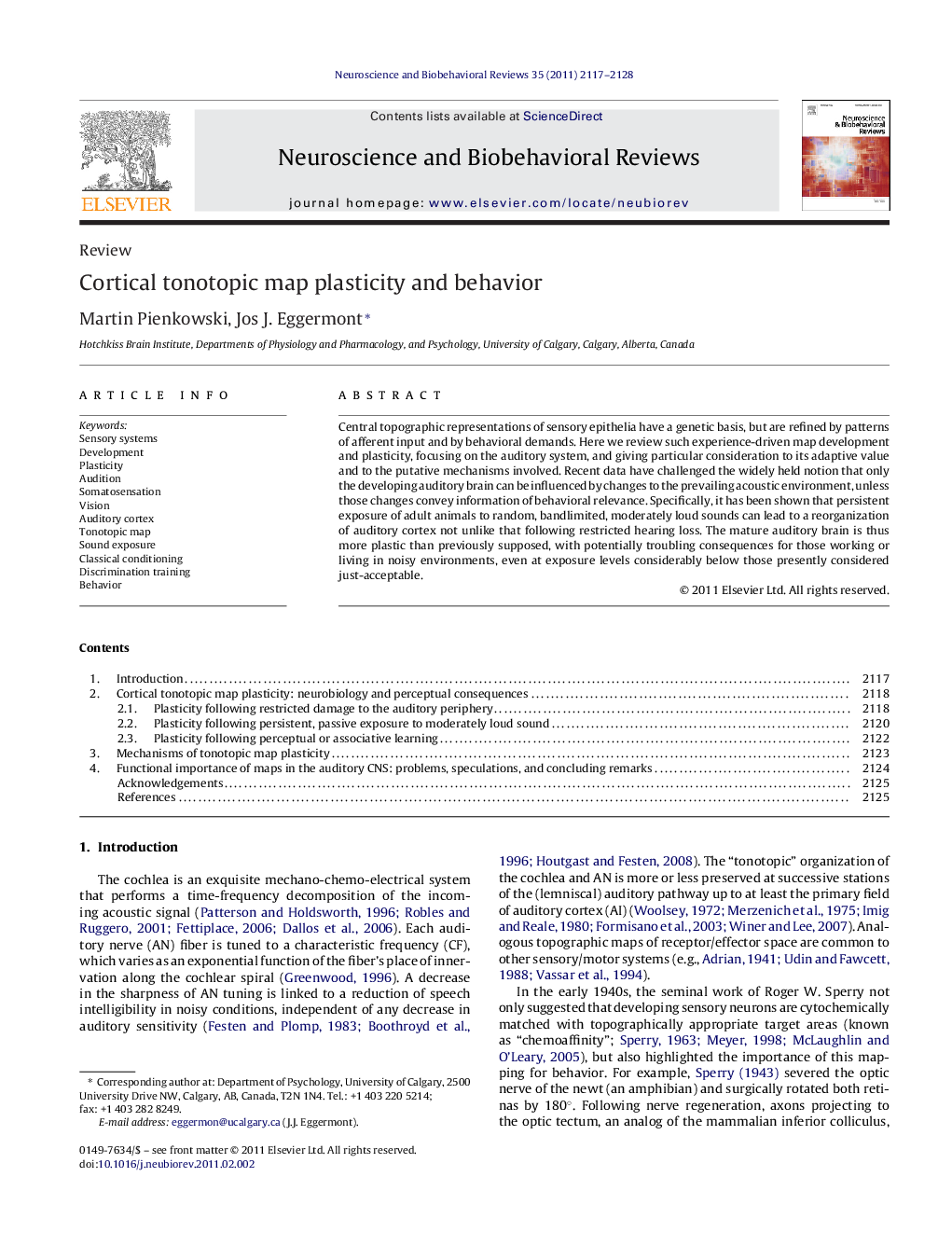| Article ID | Journal | Published Year | Pages | File Type |
|---|---|---|---|---|
| 10461532 | Neuroscience & Biobehavioral Reviews | 2011 | 12 Pages |
Abstract
Central topographic representations of sensory epithelia have a genetic basis, but are refined by patterns of afferent input and by behavioral demands. Here we review such experience-driven map development and plasticity, focusing on the auditory system, and giving particular consideration to its adaptive value and to the putative mechanisms involved. Recent data have challenged the widely held notion that only the developing auditory brain can be influenced by changes to the prevailing acoustic environment, unless those changes convey information of behavioral relevance. Specifically, it has been shown that persistent exposure of adult animals to random, bandlimited, moderately loud sounds can lead to a reorganization of auditory cortex not unlike that following restricted hearing loss. The mature auditory brain is thus more plastic than previously supposed, with potentially troubling consequences for those working or living in noisy environments, even at exposure levels considerably below those presently considered just-acceptable.
Keywords
Related Topics
Life Sciences
Neuroscience
Behavioral Neuroscience
Authors
Martin Pienkowski, Jos J. Eggermont,
